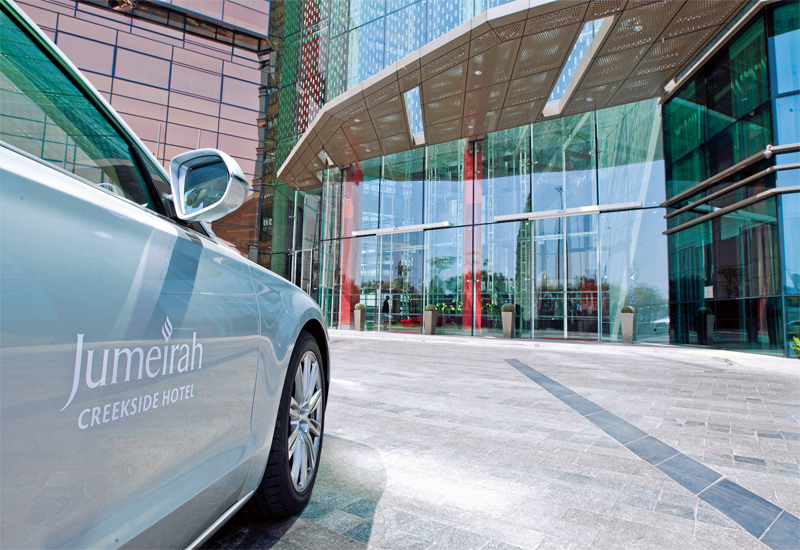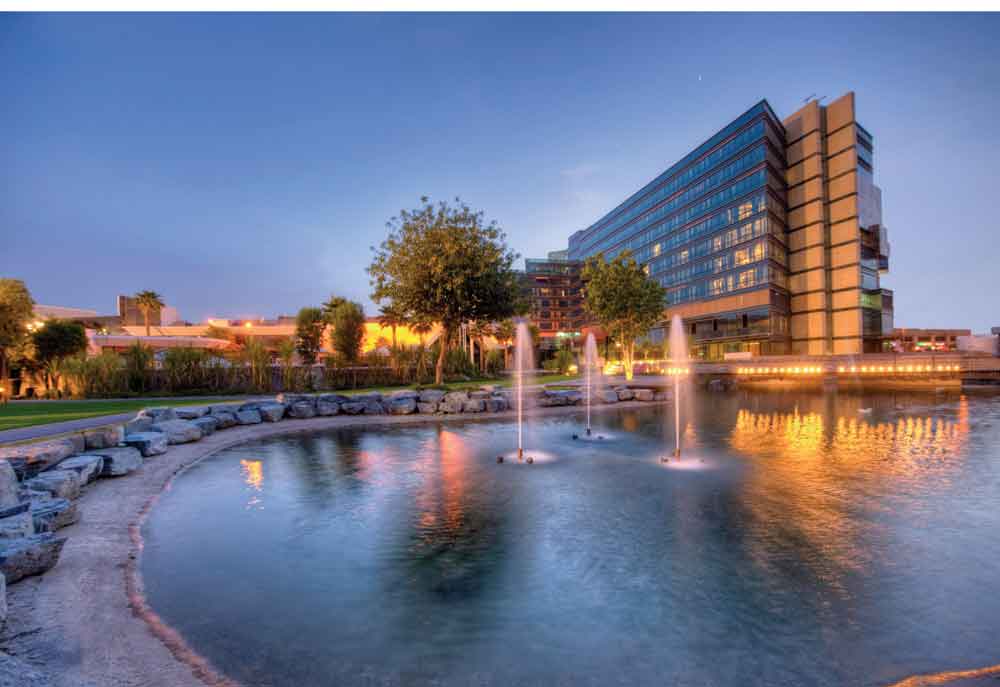The management team at the newly-opened Jumeirah Creekside explains why the hotel’s 482-piece art collection forms the cornerstone of its lifestyle focus, which aims to connect and engage with the property’s trendy target market
From its exposed concrete in the lobby to angular furniture in the guest rooms through to its exclusive art collection and media screening room, Jumeirah’s newest addition to its Dubai hotel portfolio is markedly different from the rest.
Located in Garhoud, attached to The Aviation Club and owned by Dubai Duty Free, Jumeirah Creekside is a modern city hotel in the style more often associated with the boutique independents of London and New York than the palatial Arabesque properties of this region.
The design, by Magus Design of Dubai, is refreshingly contemporary, even including a glass bottomed pool that juts out over the lobby, but Jumeirah Creekside is not just a pretty face. It promises a unique experience in Dubai — and I don’t use that phrase lightly.

| Advertisement |
Jumeirah has clearly identified its latest addition as an “art and lifestyle hotel in the five-star luxury segment” — so just four weeks after it opened on July 1, we paid a visit to challenge this concept.
After all, “lifestyle” is a word used fairly flippantly in the hotel industry; how does Jumeirah Creekside plan to truly deliver this? Are there really segments no-one else has properly tapped into to date? And if so, what can Dubai’s hoteliers learn from the new kid on the block?
Defining a segment
The management team at Creekside is headed by Klaus Assman, who has worked for Jumeirah since 2003 and been in his current role for two years, sticking with the project through four delays because he was so enamoured by it.
The hotel has a chequered past, as it was originally intended to be flagged under Jumeirah’s now abandoned lifestyle brand, Venu, which Assman was heading up when we first met a couple of years back. But, with Jumeirah deciding to focus on its core luxury brand, the Creekside hotel is attempting to carve out a new segment for itself.
“We are proud to be Jumeirah, we cannot be anything else other than Jumeirah, but still, we also like to be ‘boutique-ish’ in a way,” asserts Assman.
For him, the rationale for the approach is simple: it’s about offering a product that suits the style of the hotel, and above all, stands out beyond the competition. With 25 meeting rooms and a 1000-capacity ballroom, Jumeirah Creekside is essentially a MICE hotel.
Yet with the Aviation Club’s leisure facilities that are now run by Jumeirah and choice of F&B outlets, it could also be described as a city resort. But even these attributes combined are not enough to set the hotel apart, says Assman.
“Our drive was there’s too much competition in Dubai who are doing the same, and we’re not in the market to compete with them on MICE, compete with them on corporate, we wanted to create our own segment and our segment is art and lifestyle,” Assman says. “Uniqueness is what in my opinion will drive you to be a trend setter and not a trend follower...we are bringing a trend to Dubai.”
Every facility and service, therefore, is aimed at complementing this heavy arts focus, from the screening room that will be used for press junkets and documentaries to the recruitment of an arts and culture programme manager, who doesn’t just educate guests about the hotel’s 482-piece collection but engages the hotel and its guests with Dubai’s art scene as a whole.
The type of guest the hotel seeks to appeal to is wide ranging in terms of age and nationality — although GCC, India and China are all strong markets for the company at present and Jumeirah historically attracts the Russians, British and Germans — but it will most likely be someone abreast of current trends.
“It’s somebody who appreciates what is happening in the world right now, somebody who has a contemporary outlook”, explains Assman.”
He is conscious, however, of the risks associated with terms such as “lifestyle”, which are used by Dubai hotels already even though they are offering more traditional luxury.
“We feel lifestyle again is a word that’s been used to death and it’s not about the sales or the marketing but what you need first and foremost is positioning. Positioning of a hotel takes place with public relations, we have PR. After that it’s followed by marketing, and that’s then followed with sales efforts,” says Assman.
Article continues on next page ...










 Search our database of more than 2,700 industry companies
Search our database of more than 2,700 industry companies









